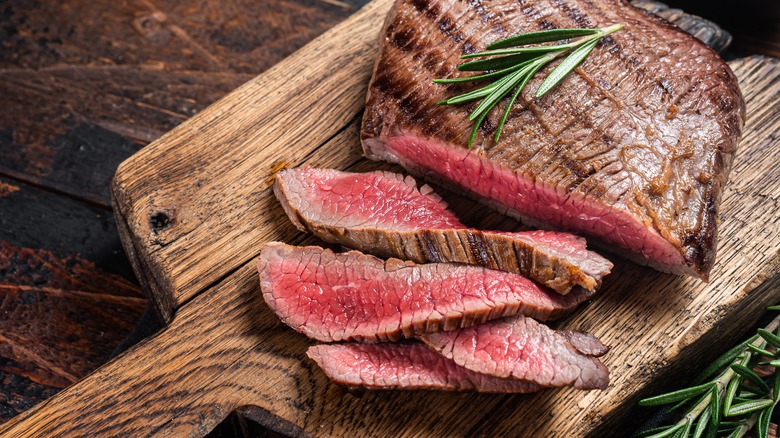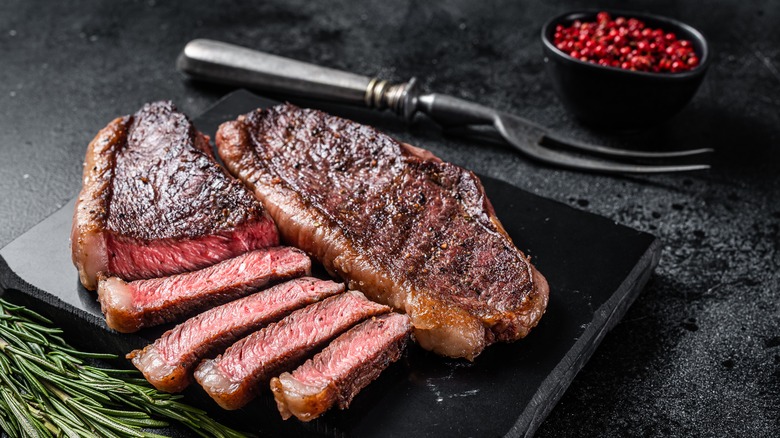What The Gray Band Around Your Cooked Steak Actually Is
If you prefer your steak well done, you may have never noticed a grayish band running around the outer edge of your cut. However, if you like things a bit more rare, this discolored ring can be troublesome. At the very least, when viewed against the juicy pink center, it can appear unappetizing.
If your steak looked, smelled, and felt fine before cooking and now has a gray ring around the edge, it's probably nothing to worry about. In fact, it is expected. When cooking, myoglobin — a protein found in the muscle tissue of vertebrates — breaks down and causes meat to change color. In general, the hotter your steak gets while being cooked, the darker it will turn when it is done (imagine the color difference slicing through a medium-rare steak and one that's well done). In other words, the gray rim around the perimeter of your steak is just overcooked meat — the edges became hotter than the middle while you were cooking and this part appears darker.
Strategies to reduce or prevent the gray band
Although that gray band that appears after cooking might look unsafe, the USDA advises that color alone does not indicate spoilage. Meat that has gone bad will also have an off odor and a sticky or slimy texture.
But if you take pride in your work, you'll still want your steak to look its best when served. There are a couple of tricks to reduce or prevent your grilled steak from turning gray. The first is to stop thawing your frozen steaks before cooking. When you cook a steak from frozen, even high-temperature searing won't penetrate it as deeply. This way, you can have that desirable complex flavor and crispy texture without the unfortunate gray ring.
Another cooking method that helps diminish the gray area is to cook the steak at a very low temperature so it heats evenly throughout the process. When you are about 20 degrees away from medium rare, sear it quickly with more oil than usual and flip it every 30 seconds. When done, there should be little-to-no discoloration around the edge.

